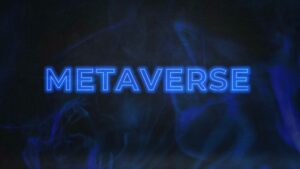MongoDB is a non-relational database, while PostgreSQL is a relational database. While NoSQL databases work on storing data in key-value pairs as one record, relational databases store data on different tables. PostgreSQL is a highly stable database management system, backed by over 20 years of community development that has led to its high levels of integrity, resilience, and correctness. You can use PostgreSQL as the primary data warehouse or data source for various mobile, geospatial, analytics, and web applications.

MongoDB, known for its flexibility and scalability, has evolved to support multi-document ACID transactions, even in its NoSQL environment. Introduced in version 4.0, MongoDB’s transactions behave similarly to those in traditional relational databases, allowing multiple changes to be made in a single transaction across different collections and documents. It is a non-relational database which means it can be used to store and process data in different formats.
Explaining the language of PostgreSQL and MongoDB
When multiple transactions occur simultaneously, isolation ensures that each one is executed in a way that it’s unaware of other concurrent transactions. However, when working with NoSQL databases like MongoDB cloud, there are some key differences that are important for you to understand. MongoDB offers great flexibility in storage, schema, and scaling, but relaxes some of the ACID properties. It’s essential to understand the differences as you model your data and execute MongoDB commands. Most popular relational databases today support “ACID” properties – Atomicity, Consistency, Isolation and Durability.
- In fact, TLS is simply an upgraded SSL of sorts, created to reduce security vulnerabilities.
- In this perspective it makes sense to focus on different subsets of a Mediterranean dataset rather than examining a very sparse dataset, e.g. in the Pacific or Atlantic ocean.
- With phishing attacks, malware, and other threats on the rise, it is essential that you make the right choice to keep your data safe and process it effectively.
- Databases treat single document transactions as a sequence of operations, ensuring the safe management of storing related data.
- This allows for even greater scalability while still maintaining a high level of data integrity.
- The plumbing that makes MongoDB scalable is based on the idea of intelligently partitioning (sharding) data across instances in the cluster.
- It’s a simple, basic query plan – it might perform better if you throw lots of work_mem at it, but it might not, too.
The table that is divided is called the partitioned table, the specification consists of the partitioning method, and the list of columns or expressions to be used is called the partition key. When it comes to collaboration, PostgreSQL includes user-level privileges, role inheritance, and table-level privileges. In the next section, we’ll elucidate the differences between MongoDB and PostgreSQL to help you make that decision easily. Our information is based on key factors like architecture, ACID compliance, extensibility, replication, security, and support to name a few. It also allows you to create a cloud database in minutes using the Atlas CLI, UI, or an infrastructure-as-a-service (IaaS) resource provider. When starting a new project, one of the things developers can struggle with is choosing a stack.
PostgreSQL: A Modern SQL Database
This allows for even greater scalability while still maintaining a high level of data integrity. ACID transactions serve as the backbone of data reliability in database systems. They ensure that every transaction is processed rigorously, minimizing risks of data anomalies or corruption. In a relational database like SQL Server, consider an e-commerce scenario where a customer places an order. The system needs to update inventory, log the transaction, and adjust the customer’s balance.

The right answer for your needs is based of course on what you are trying to do. Our goal in this article is to help to explain the personality and characteristics of each of these databases so you can better understand whether it meets your needs. ScaleGrid is a fully managed database hosting service for MongoDB® , Redis™, MySQL, and PostgreSQL on public and private clouds. If you want to know how MongoDB compares to Redis in terms of performance, speed, and scalability, check out our Redis vs. MongoDB Performance blog post.
PostgreSQL version 15+ ERROR: permission denied for schema public
It needs several teams in development, ops, and the database administrator to coordinate the changes made in the structure carefully. Mongo RealmDB is available free of charge to all Atlas users for evaluation and light usage, enabling developers to build and release mobile applications. Unlike MongoDB, PostgreSQL depends on a scale-up strategy (vertical scaling) for data volumes and scaling writes. It’s performed by adding more hardware resources like disks, CPUs, and memory to an existing database node. Assessing the performance of two different database systems is challenging since both MongoDB and PostgreSQL have different ways of storing and retrieving the data.
The first post covered “Schema Later Considered Harmful.”
In this blog post we review the JOIN capabilities in both MongoDB and Postgres. The conclusion is that MongoDB joins are very brittle (when things change, application programs must be extensively recoded), and often MongoDB offers very poor performance, relative to Postgres. We begin in Section 2 with MongoDB support for joins, then continue in Section 3 with the corresponding capabilities in Postgres. In Section 4 we show why MongoDB joins are brittle, and finally in Section 5 we consider join performance in both systems.
Send email from airflow Setup airflow email in 2023
It’s what we leveraged for building TimescaleDB and how pgvector came about as well. The rise of large language models (LLMs) like GPT-4, Llama 2, and Claude 2 is driving explosive growth in AI applications. Every business is urgently exploring how to use LLM’s new, game-changing capabilities to better serve their customers—either by building new applications with AI or adding AI capabilities to their existing products.

Replica sets can be implemented across various data centers too, as they would come in handy in case of regional outages. This can be done by MongoDB Atlas, which makes building and configuring these clusters simpler and quicker. You can implement partitioning via a range, where the table can be partitioned by ranges defined by a key column or set of columns, with no overlap between the ranges of values assigned to different partitions. A key feature that sets MongoDB apart from PostgreSQL is its approach to storing its data.
Benchmarking ANN Search: Methodology and Results
In this article, we delve into the intricate nuances of MongoDB and PostgreSQL, putting them against each other in a battle for superiority. In the realm of modern data management systems, MongoDB and PostgreSQL have emerged as titans, each offering unique strengths and capabilities to meet the diverse needs of businesses and developers worldwide. As organizations navigate the ever-expanding landscape of databases, choosing the right one becomes a critical decision that can shape the efficiency, scalability, and success of their applications.

This allows for correcting the diminished accuracy from the indexed data using heap data, refining the search results. For instance, when searching for k items, the index can be prompted for 2k items, which can then be re-ranked using heap data to yield the closest k results. Our decision to house our index in a standalone extension from pgvector was influenced by our use of Rust (for context, pgvector is written in C). Yet, we aimed to simplify its adoption by avoiding introducing a new vector data type. Hence, our index works with the vector data type provided by pgvector. This allows users to easily experiment with different index types by creating different indexes on the same table contents.
MongoDB vs MySQL: Which Is the Better Database Management System?
Bill has over 25 years of experience working in various software roles related to full stack development including user interface, middleware, databases (RDBMS and NoSQL), security, DevOps, training, and mentorship. If built-in scalability is desired, then MongoDB inherently mongodb vs postgresql performance can scale horizontally with native sharding. Scaling out by adding new nodes or shards can be configured with ease. Automatic failover and replication are also built into MongoDB where PostgreSQL requires either an extension or more configuration to support those features.